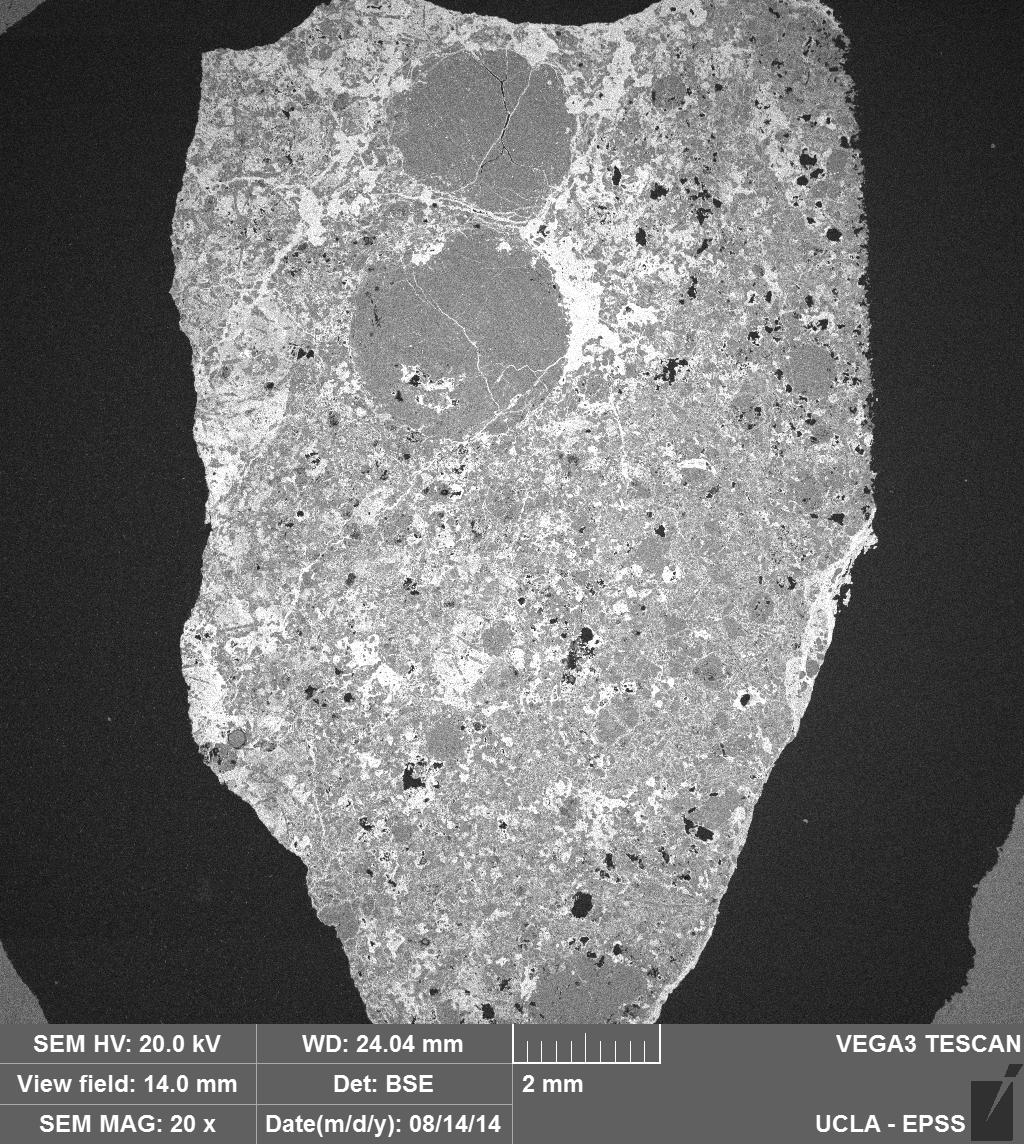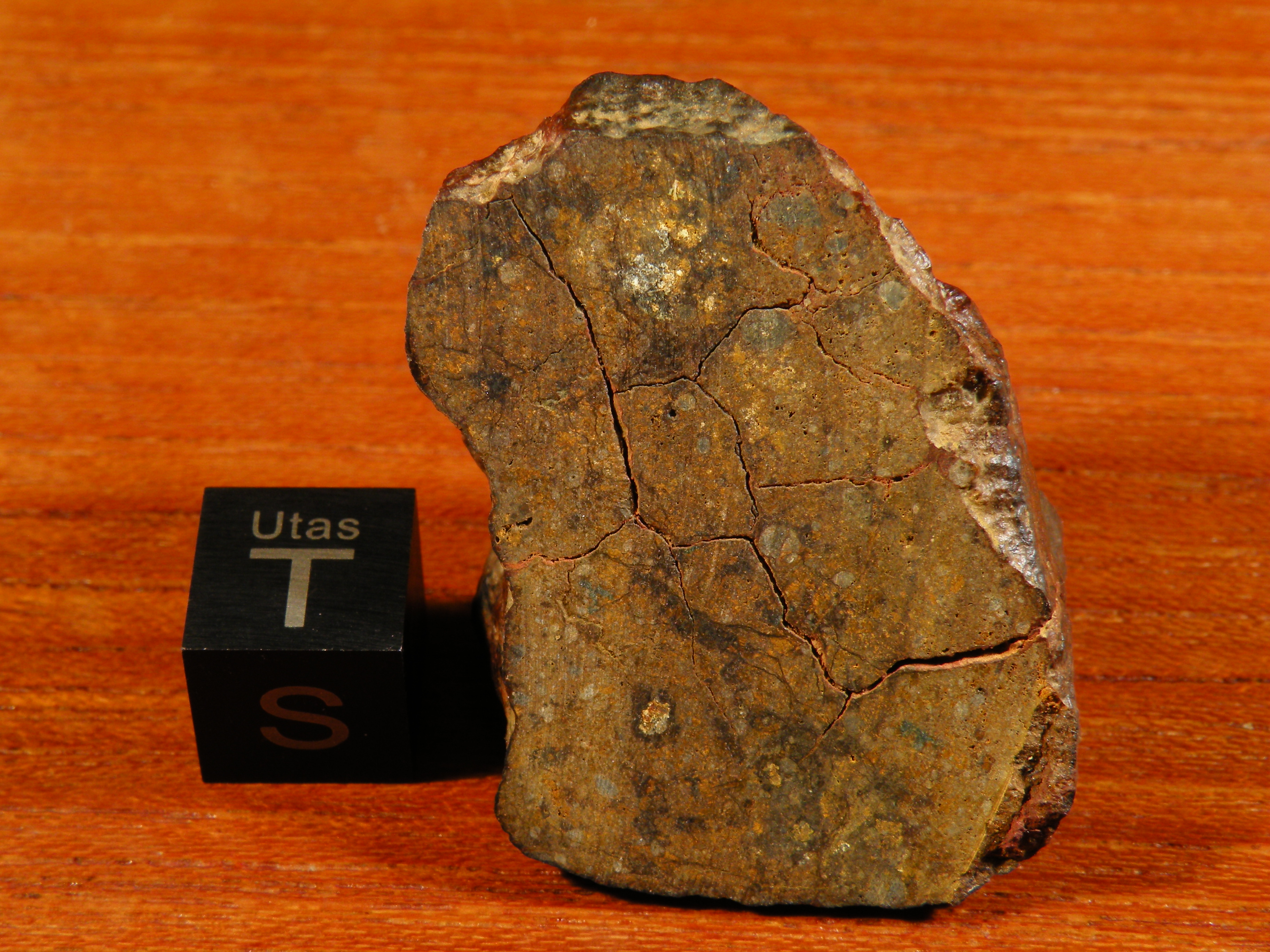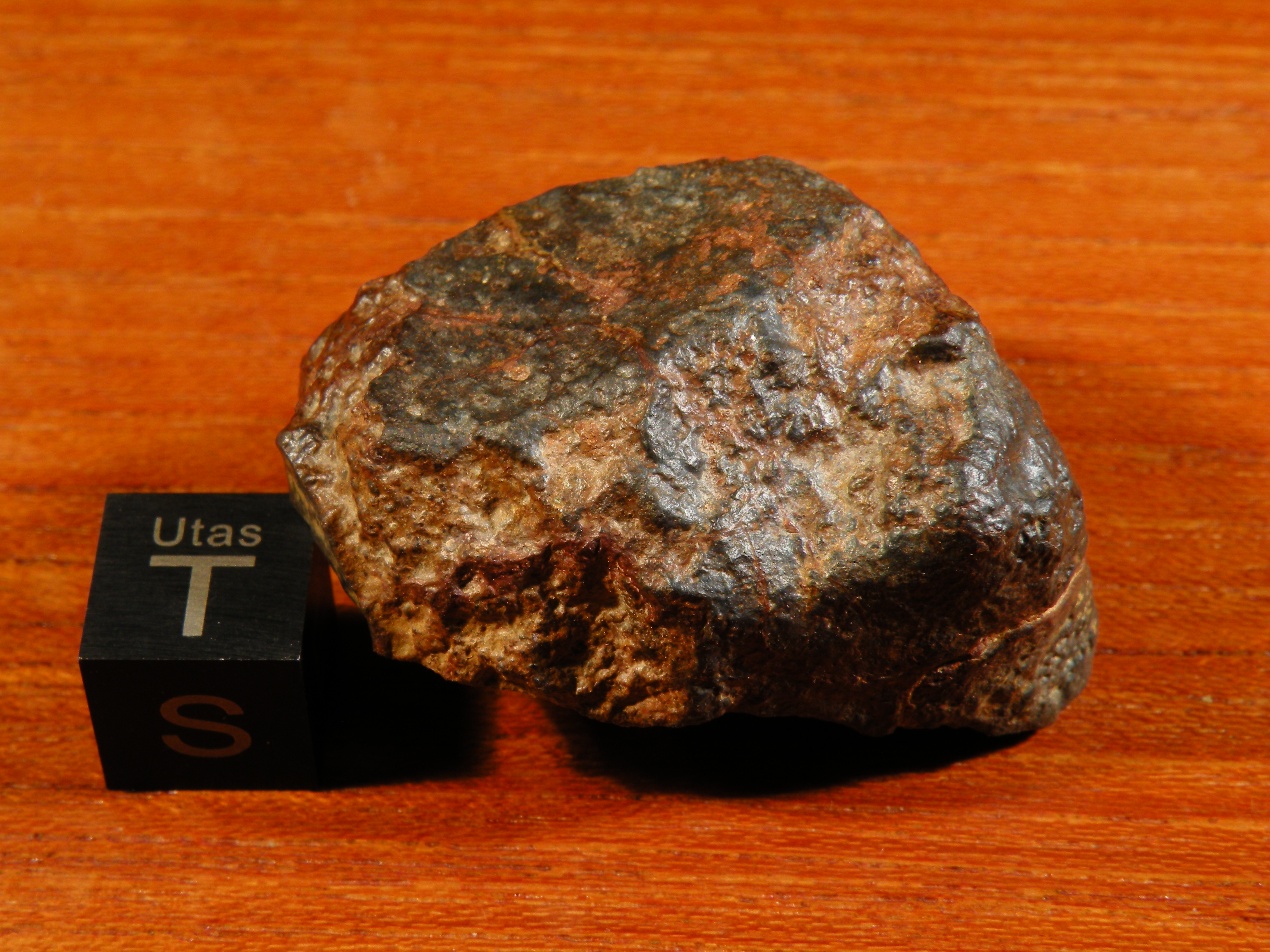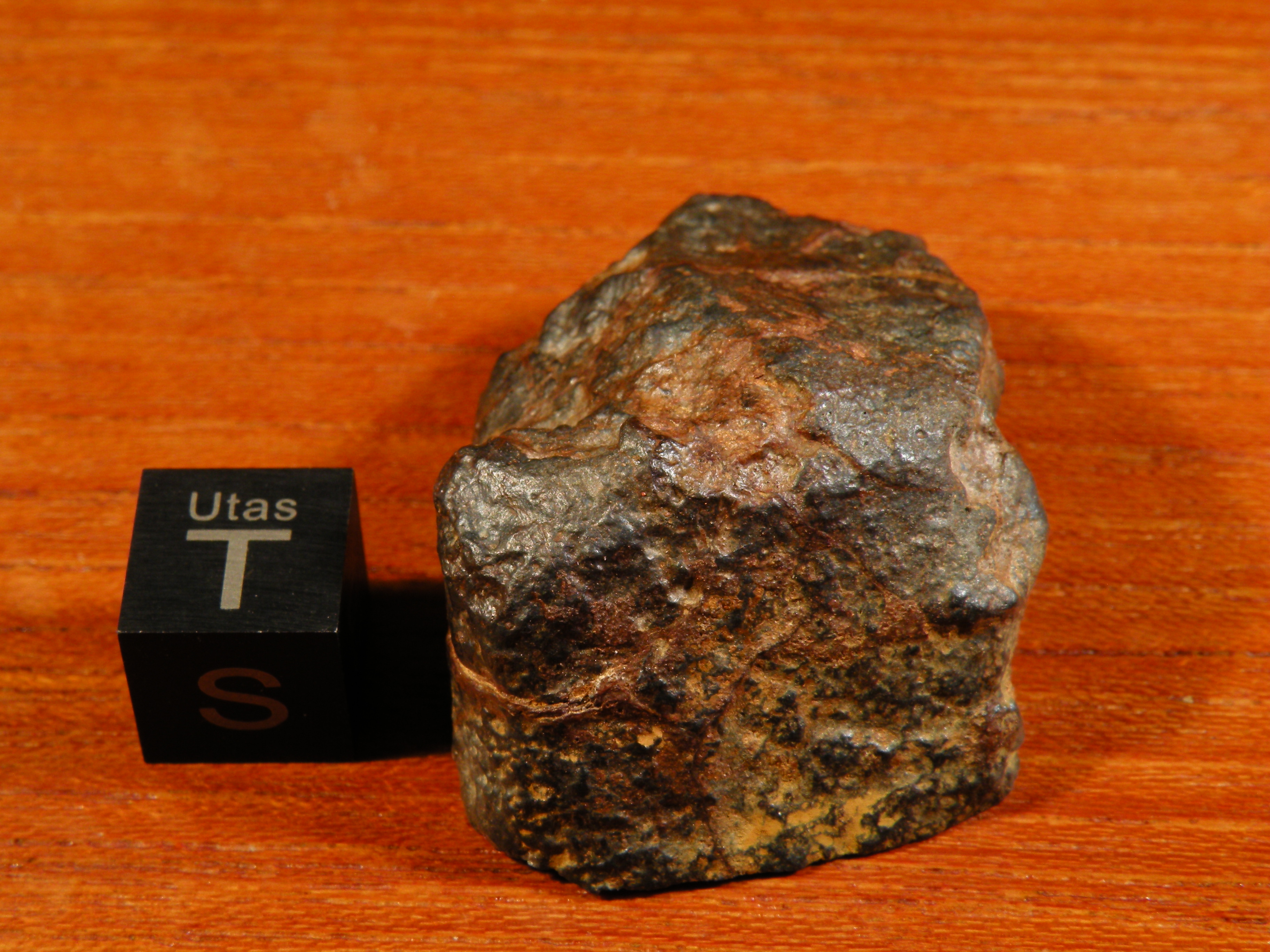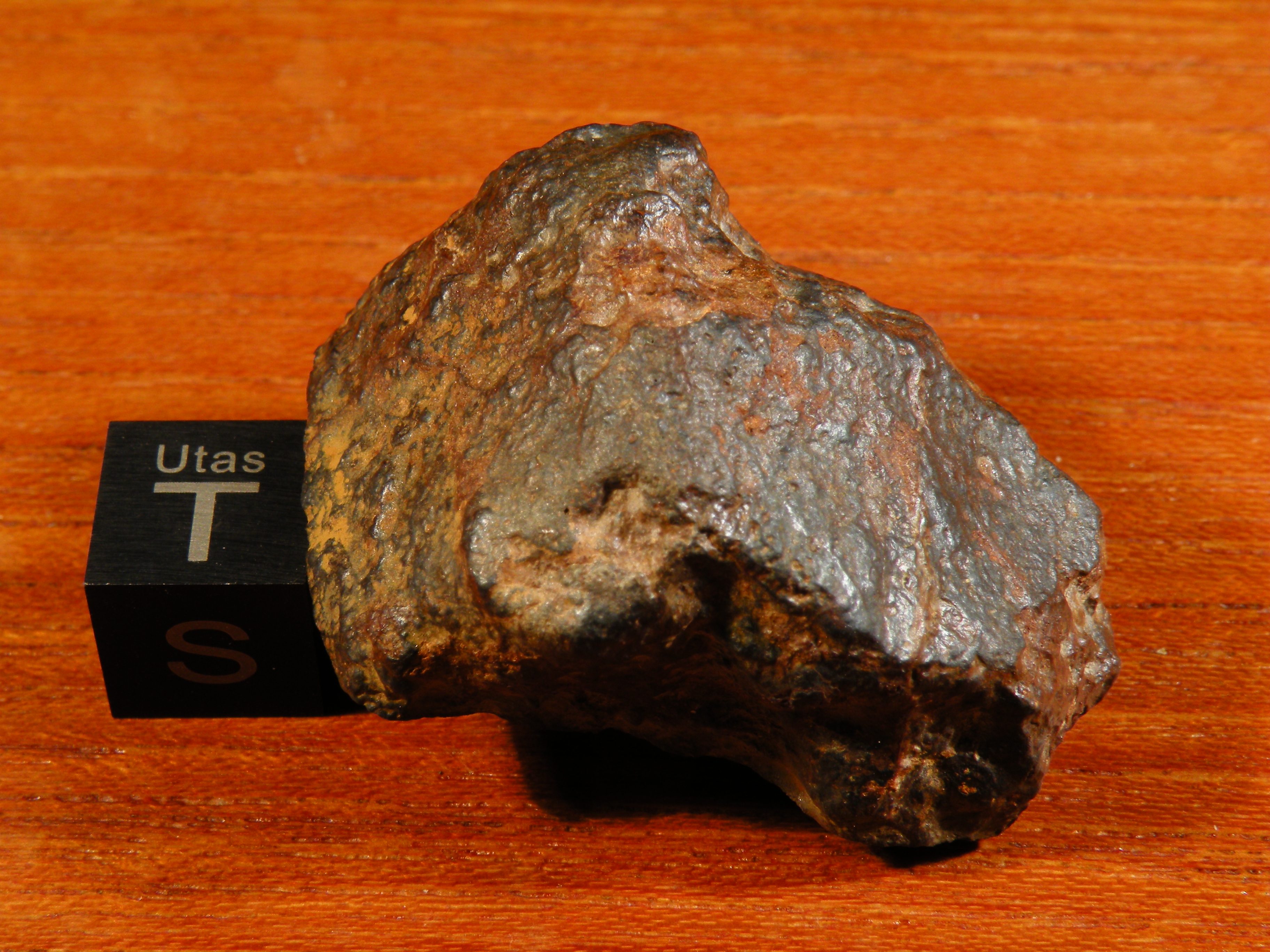NWA 10085, K4
After a first round of analyses on the microprobe at UCLA, this stone left us with more questions than answers. It is more reduced than all but a few chondrite groups. The matrix had a very high proportion of iron oxides — it was fairly metal-rich before weathering — and there was a fair amount of olivine in the stone’s chondrules and matrix. We initially thought it might be an anomalous EL chondrite. Since enstatite chondrites (only) retain olivine when unequilibrated, it would have been an EL3. But it sure didn’t look like a nice type-3 chondrite, or an impact melt.
Subsequent analyses of kamacite grains (most with an Si content below the detection limit of ~0.04%) and sulfides (Ti also below the detection limit of ~0.04%) ruled out EH and EL chondrites. The ƒO2 where this rock formed was significantly higher than the E-chondrite region of the solar nebula, but it was still more reduced than H chondrites.
This left us with precious few possibilities. ‘Ungrouped chondrite,’ ‘kakangari chondrite,’ and ‘winonaite’ were thrown around. Primitive winonaites [and acapulcoites] have markedly different mineralogy. This stone exhibits abundant enstatite laths, incorporated in iron oxides and sulfides: a feature common in enstatite chondrites — and also observed in Kakangari — but not seen elsewhere.
The ‘K’ chondrites are an enigmatic group of rocks that don’t fit traditional models of the Solar System. We think that the volatile content of the Solar System increased with distance from the Sun. Kakangari chondrites are both fine grained & primitive — and highly reduced — suggesting that they formed in a relatively low-oxygen, low volatile environment (close to the sun?). Structurally, they resemble carbonaceous chondrites, with abundant fine-grained, low-temperature matrix. Their bulk elemental abundances are very similar to H and L chondrites in many respects, but they differ in a few interesting ways: chalcophile and moderately siderophile element abundances are significantly elevated, despite the lack of highly volatile elements. This places these meteorites in a chemically messy middle ground between the more refractory ordinary and volatile-rich carbonaceous chondrites. They may be related to R-chondrites, which are compositionally similar, but much more oxidized.
This particular stone has more coarse-grained matrix than the other K-chondrites. We’re looking at it in greater detail to try to show whether this was due to secondary metamorphism, or to figure out if some other processes might account for this. Either way, I hope it tells us something interesting.
BSE images taken at UCLA: visible laths are enstatite. Lighter regions are mostly iron, sulfides, and oxides.
